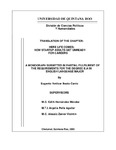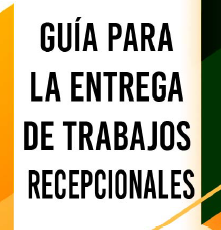Mostrar el registro sencillo del ítem
Translation of the chapter: here life comes: how startup adults get unready for careers.
| dc.contributor.author | Basto Canto, Eugenio Amilcar | |
| dc.contributor.other | PEÑA AGUILAR, ARGELIA; 466646 | |
| dc.contributor.other | ZANIER VISINTIN, ALESSIO; 219183 | |
| dc.date.accessioned | 2023-10-26T18:13:17Z | |
| dc.date.available | 2023-10-26T18:13:17Z | |
| dc.date.issued | 2009 | |
| dc.identifier.uri | http://hdl.handle.net/20.500.12249/3621 | |
| dc.description.abstract | It is impossible to talk about translation without talking about languages, since there is a relationship between them. This means, for translation to exist there must be at least two languages, the source language (SL) and the target language (TL). According to Dooley (2008), the text to be translated is called the Source Language (SL), and the language it is to be translated into is called the Target Language (TL), the final product is sometimes called the Target Text (TT). Hennequin (1999) indicates that the first thing a translator must do is to read and understand the text, which makes him a text reader. He goes on to ask questions which have to be addressed when reading a text: What is the content, author, target audience, intentions, production circumstances, reception circumstances, original language, style, register, genre and presentation or media used. To translate is not easy because the message must convey the same meaning in both languages. In all cases, a translator has to take into account two important aspects in a translation: he has to bethe writer and the reader at the same time. This means, he must know how to write and cause the same impact or effect as does the original text. And second, he has to write in such a way that the text is understandable for those people whom the text is addressed to. | |
| dc.description.provenance | Submitted by Guadalupe Castillo Villanueva (castillogm@uqroo.edu.mx) on 2023-10-26T18:12:07Z No. of bitstreams: 1 P306.B37.2009-59697.pdf: 330347 bytes, checksum: 60d84ad30a5303c77fa33037ab12d2fe (MD5) | |
| dc.description.provenance | Approved for entry into archive by Guadalupe Castillo Villanueva (castillogm@uqroo.edu.mx) on 2023-10-26T18:13:17Z (GMT) No. of bitstreams: 1 P306.B37.2009-59697.pdf: 330347 bytes, checksum: 60d84ad30a5303c77fa33037ab12d2fe (MD5) | |
| dc.description.provenance | Made available in DSpace on 2023-10-26T18:13:17Z (GMT). No. of bitstreams: 1 P306.B37.2009-59697.pdf: 330347 bytes, checksum: 60d84ad30a5303c77fa33037ab12d2fe (MD5) Previous issue date: 2009 | |
| dc.format | ||
| dc.language.iso | eng | |
| dc.publisher | Universidad de Quintana Roo | |
| dc.rights.uri | http://creativecommons.org/licenses/by-nc-nd/4.0 | |
| dc.subject | Traducción e interpretación | |
| dc.subject.classification | HUMANIDADES Y CIENCIAS DE LA CONDUCTA::LINGÜÍSTICA::LINGÜÍSTICA APLICADA::TRADUCCIÓN | |
| dc.title | Translation of the chapter: here life comes: how startup adults get unready for careers. | |
| dc.type | Trabajo de grado, licenciatura | |
| dc.type.conacyt | bachelorThesis | |
| dc.rights.acces | openAccess | |
| dc.identificator | 4||57||5701||570112 | |
| dc.audience | generalPublic | |
| dc.division | Campus Chetumal Bahía | |
| dc.division.sub | División de Humanidades y Lenguas | |
| dc.division.programa | Lengua Inglesa |
Ficheros en el ítem
Este ítem aparece en la(s) siguiente(s) colección(ones)
-
Licenciatura [2590]






